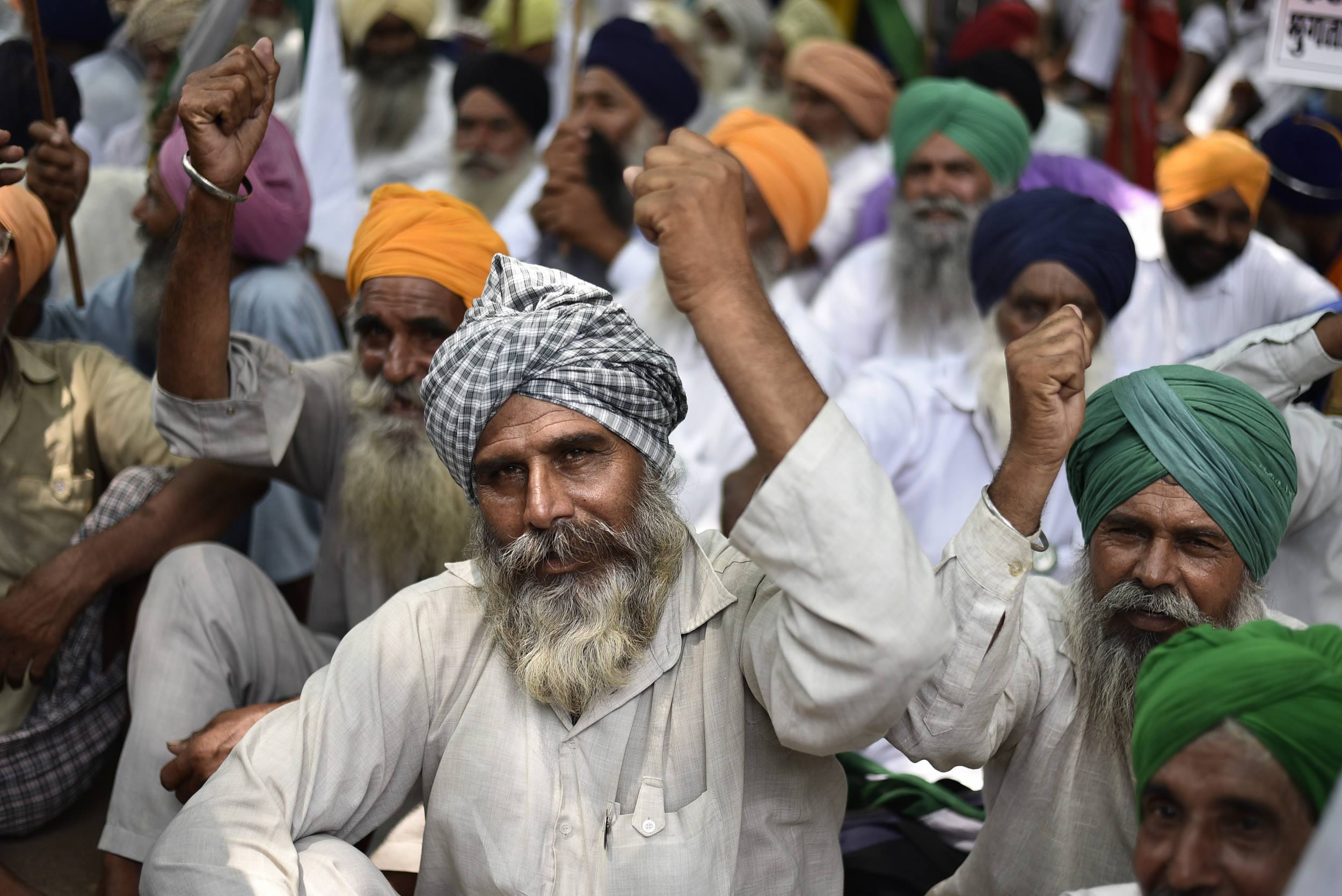Indian Finance Minister Arun Jaitley unveiled a budget heavy on investment in agriculture and healthcare on Thursday, a week after Prime Minister Narendra Modi told the World Economic Forum he would double his country’s economy by 2025.
Going into the budget, Modi was faced with a tight balancing act between attracting votes for next year’s elections and a need to reduce India’s deficit while boosting economic growth and maintaining stability.

Modi at the World Economic Forum, Davos, Switzerland, January 23, 2018. /VCG Photo
Modi at the World Economic Forum, Davos, Switzerland, January 23, 2018. /VCG Photo
After widespread protests from farmers in 2017, a focus on rural affairs and the poor in this year’s budget can be seen as a pivot to the countryside vote – a major base of support in Modi’s election four years ago.
Balancing the deficit with voter discontent
The IMF predicts India’s economy to grow by 7.4 percent in 2018, with the World Bank suggesting 2019 and 2020 will both see a 7.5-percent growth.
The two global institutes may have given Modi’s economic policies their backing, but more important are the views of increasingly frustrated voters, ahead of an election next May.
Modi’s
demonetization and
GST (Goods and Services Tax) policies were deemed as necessary reforms, but they have proved highly disruptive.
The removal of low denomination notes (86 percent of currency in circulation) led to lengthy queues of confused and panicked people outside banks, while GST has been criticized for being overly complicated.

People stand in a queue outside banks to deposit and exchange old denomination Indian rupee 500 and 1000 currency notes November 24, 2016 in New Delhi, India. /VCG Photo
People stand in a queue outside banks to deposit and exchange old denomination Indian rupee 500 and 1000 currency notes November 24, 2016 in New Delhi, India. /VCG Photo
Jaitley said in his budget report that India’s deficit would be pegged to 3.3 percent, still missing a target set by Modi of 3.0 percent that has never been reached under his leadership.
With one eye on disgruntled urban voters, who are also concerned by rising food and oil prices and low wage growth, Jaitley unveiled a corporation tax cut from 30 to 25 percent for small and medium businesses.
A rise in customs duty on mobile phones and televisions can be seen as a nod to Modi’s “Made in India” initiative, as the government looks to support Indian technology.
Meanwhile, moves to tax gains made on the stock market – which increased by 29 percent in 2017 – could bring in some much-needed cash to tackle the deficit.
More support for rural regions
Modi has previously enjoyed strong support in India’s countryside, but increasing financial pressure on agriculture has led to unrest, forcing him to allocate more money to rural regions.

A protest demanding fair prices for crops and pensions, on July 18, 2017 in New Delhi. /VCG Photo
A protest demanding fair prices for crops and pensions, on July 18, 2017 in New Delhi. /VCG Photo
In September 2017, rural wages had only grown by 4.56 percent compared to the previous year, while the effects of demonetization on the countryside’s informal economy sparked protests.
The government appears to have listened, by announcing a series of moves to boost farmers' incomes and improve livelihoods in the countryside. Regulations on agricultural exports will be stripped away, while prices will be marked up by 50 percent on all produce in a bid to boost prices.
Credit available to the agricultural sector will be raised to 172.3 billion US dollars, while funding worth 390 million US dollars will be pumped into rural infrastructure, logistics and management.
Greater access to healthcare
One of the headline pledges of Jaitley’s budget was the announcement that 100 million families on low incomes would be given access to government-funded healthcare, with annual coverage worth 7,800 US dollars per family.

Reforms and investment in healthcare are set to see 150,000 new medical centers set up across the country. /VCG Photo
Reforms and investment in healthcare are set to see 150,000 new medical centers set up across the country. /VCG Photo
The government will invest 187.2 million US dollars into new healthcare centers across the country, with plans for 150,000 new facilities set to dramatically boost access to medical care for India’s population of 1.324 billion people.
More infrastructure investment
The Economic Survey, an official study of India’s economic situation published before the budget, pointed to a need for 4.5 trillion US dollars of infrastructure spending by 2040.
While China has spent massively on infrastructure in the past decade, India has suffered from significant under-investment, according to the Economic Survey.

Passengers stand in the doorways of train carriages as the train arrives at Sewri railway station in Mumbai, India, on Saturday, Jan. 27, 2018. India has an expansive, but overcrowded and aging railway network. /VCG Photo
Passengers stand in the doorways of train carriages as the train arrives at Sewri railway station in Mumbai, India, on Saturday, Jan. 27, 2018. India has an expansive, but overcrowded and aging railway network. /VCG Photo
Thursday’s budget saw a pledge of 225.5 billion US dollars for rural infrastructure, with plans to develop 35,000 kilometers of roads across the country. The country’s aging rail network will also get a 23.4 billion US dollar boost.







